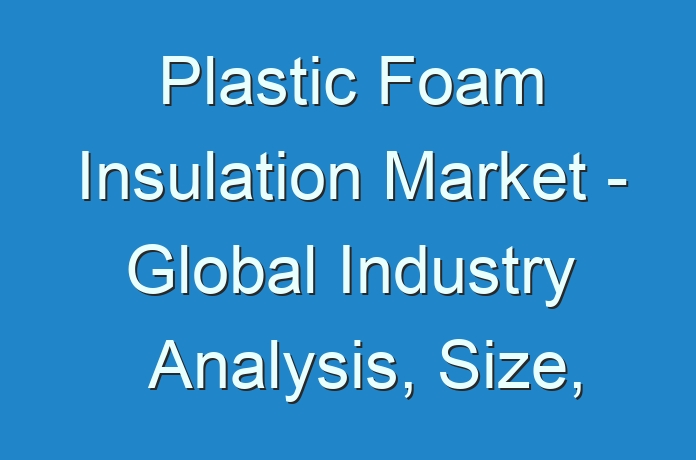
Plastic foam insulation refers to a material that has been expanded intentionally using a foaming agent to produce a reduced-density plastic consisting of voids with open or closed cells distributed throughout the body for thermal insulating or acoustic purposes. The various types of plastic foam insulation materials include polystyrene, polyurethane, polyisocyanurate, and phenolic foam. They exhibit good fire resistance according to the British Standard 476 and superior R-value. Plastic foams are used in different forms such as rigid board and spray-applied insulation.
Request PDF brochure
https://www.transparencymarketresearch.com/sample/sample.php?flag=B&rep_id=24824
Expanded polystyrene foam (EPS) is produced from solid polystyrene beads created by injecting and dissolving a small amount of pentane gas into the base material during the production process. When exposed to heat, these beads expand to develop closed cells which are white in color and around 40 times the volume of the original bead. They can then be molded to form insulation, boards, blocks, or shapes. This foam exhibits a lower density and R-value than extruded polystyrene foam (XPS) which is developed from solid polystyrene crystals fed to an extruder along with various additives. The high degrees of heat and pressure help convert the mixture into a plastic fluid. This thick liquid plastic is then forced into die after which it is expanded to a foam and further shaped, cooled, and cut. This foam exhibits higher density and R-value than EPS foam. Polyurethane is generated by the reaction between two polyols and an isocyanate. The amount to be used in these depends on the equivalent chemical weight. Polyisocyanurates (PIR) can be generated without polyol using only additives and isocyanate. Highly cross-linked thermosetting polymers are formed when isocyanate reacts with itself. For commercial PIR, polyurethane is modified with polyisocyanurates. Other foam insulations include phenolic foam, polyimide foam, polyolefin foam, melamine foam, flexible polymeric foam, and reflective insulation.
More Trending Reports:
The growing public awareness about the need to save energy is a driving factor for the plastic foam insulation market. Governments around the globe are providing tax benefits to green buildings which consume a limited amount of energy, propelling the market. Non-residential insulation is a key application of plastic foam insulation.
The plastic foam insulation market can be segmented on the basis of geography. The U.S. is poised to be a major market, accounting for a majority of the total global demand. Demand in the U.S. is bound to be higher than that in all of Europe and Asia Pacific, Middle East & Africa, and Latin America. The plastic foam insulation market in Europe is also likely to witness growth during the forecast period on account of the upcoming infrastructure projects in the region. The market in Asia Pacific is estimated to expand widely over the forecast period owing to the massive low-cost plastic resin infrastructure in the region. The market in the rest of the world constituted a minor share in the plastic foam insulation market. However, the scenario in this region is predicted to change owing to the burgeoning construction industry. The rest of the world is likely to exhibit a positive outlook for plastic foam insulation in the foreseeable future.
Request enquiry before buying
https://www.transparencymarketresearch.com/sample/sample.php?flag=EB&rep_id=24824
Prominent players operating in the plastic foam insulation market include Rockwool International A/S, Knauf Insulation GmbH, Saint-Gobain S.A., Owens Corning Corporation, Berkshire Hathaway Inc., BASF SE, Paroc Oy, Uralita, Recticel, and Kingspan Group plc.
Request for custom research
https://www.transparencymarketresearch.com/sample/sample.php?flag=CR&rep_id=24824





